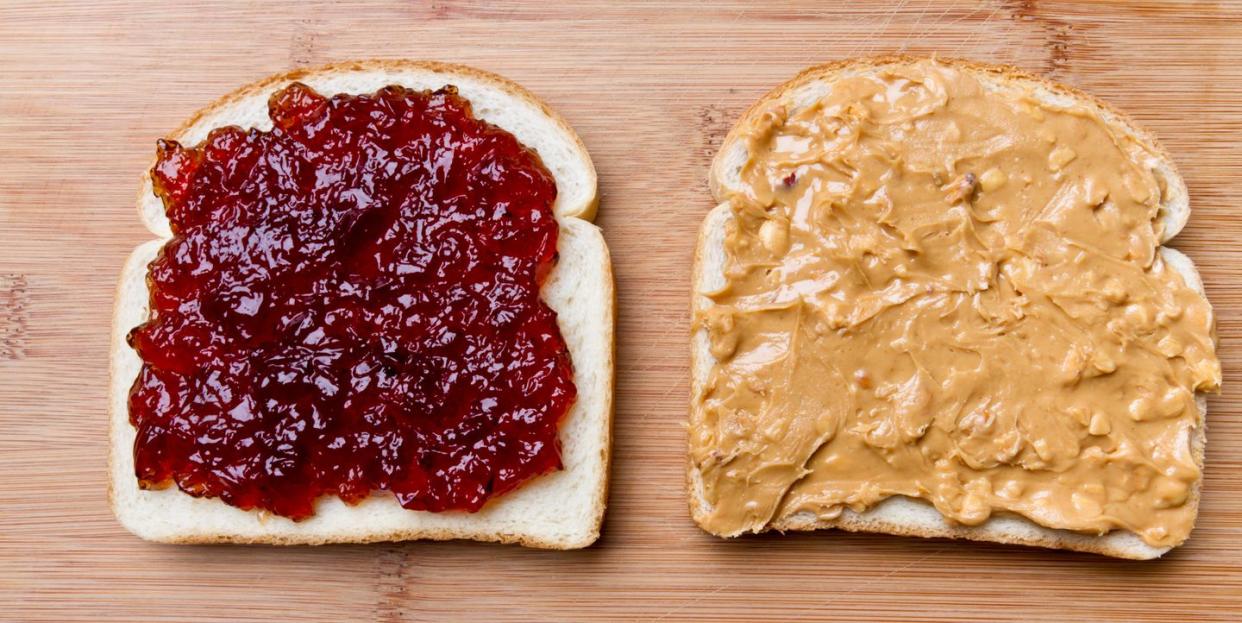Watch This Video That Perfectly Explains Implicit Bias Using Peanut Butter and Jelly

A New York Times and PBS video series created in 2016 is more relevant than ever.
In the video, experts explain how implicit bias develops using the example of a peanut butter and jelly sandwich.
The video explains that implicit bias is not the same as racism, but it is just as important to understand and dismantle.
During the 2016 election, the phrase "implicit bias" entered the national dialogue when Hillary Clinton used the term during the debates to describe how she was seen and treated differently than male presidential candidates. Today, as American culture tries to forge a way forward in the wake of the killings of Ahmaud Arbery, Breonna Taylor, and George Floyd, it's more important than ever to understand the implicit biases people carry around every day. In 2016, the New York Times' Saleem Reshamwala partnered with PBS Point of View to produce a series of short educational videos to help people understand what implicit bias is and how to dismantle it.
"Implicit biases are basically thought processes that happen without you even knowing it, little mental shortcuts that hold judgements you might not agree with, and sometimes the short cuts are based on race," Reshamwala narrates in the intro of his video titled "Peanut Butter, Jelly, and Racism."
He points out that saying that someone has implicit bias is different than calling them a racist. "The word 'racist' is a highly loaded term here in American society," says Calvin Lai, the director of research at Harvard's Project Implicit. "A lot of times when people are using it, they're thinking of the kind of old-fashioned, Ku Klux Klan-style racist."
Instead, implicit biases are a normal part of one's thought process and come from messaging they've internalized over the course of their lives. This messaging comes from media, education, pop culture, and real-life interactions.
"Think of that as a fog we've been breathing our whole life, we never even realized it, what we were taking in," says Dolly Chugh, an associate professor at NYU's Stern School of Business.
As a result, she says, people are conditioned to make assumptions based on certain signals. "If you say 'peanut butter,' I'm going to say 'jelly,'" Chugh explains. "That's an association that's been ingrained in me, because throughout my life, peanut butter and jelly are together. In many forms of media, there's an overrepresentation of Black men and violent crime being paired together."
Shaun R. Harper, the executive director of the Race and Equity Center and professor at the University of Southern California, explains that as a result of these biases connecting Black men and violence in the media, "I actually deep down inside have been taught that Black men are violent and aggressive, and not to be trusted, that they're criminals, that they're thugs."
Again, this is just the first episode of the New York Times' and PBS Point of View's "Who, Me? Biased?" video series.
If you want to learn more about implicit bias and how it manifests in everyday life, you can watch the other episodes including: "Check Our Bias to Wreck Our Bias," "The Life-Changing Magic of Hanging Out," "Why We're Awkward," "Snacks and Punishment," and "High Heels, Violins, and a Warning."
You Might Also Like

